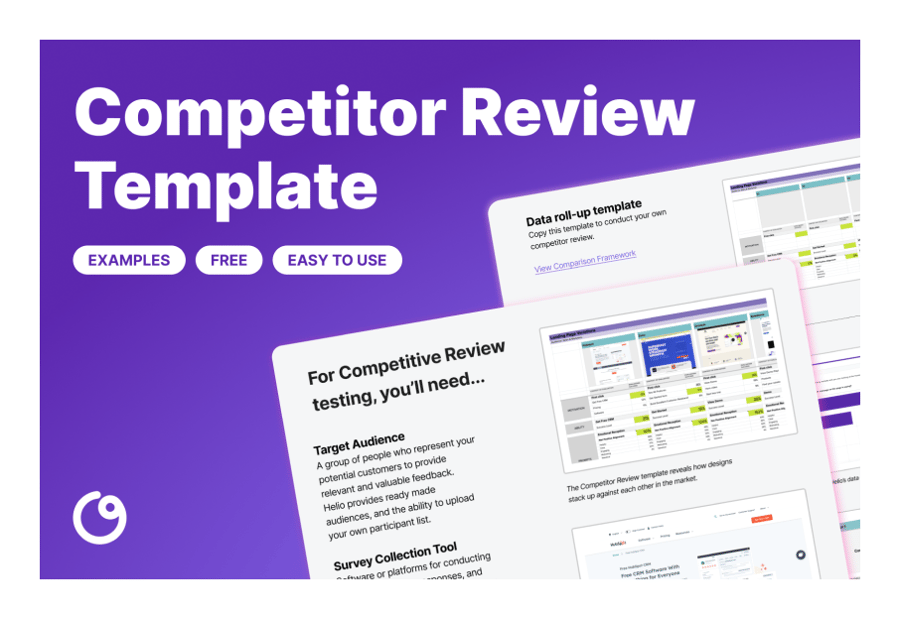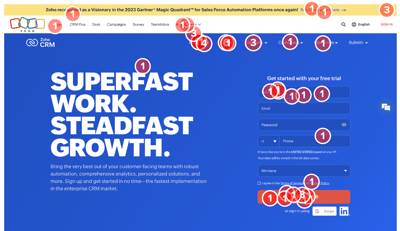Outsmart your competition with insightful reviews
Get the inside scoop on your rivals from competitor prospects


Gain a Competitive Edge
Understand your competitors through their buyers’ eyes. Identify strengths to leverage and weaknesses to exploit in your market strategy.
Refine Product Strategies
Use feedback from competitor buyers to refine your products. Ensure your offerings meet unmet needs and outperform competitors.
Identify Market Opportunities
Find market gaps your competitors miss. Use these insights to innovate and capture new market segments.
Map to UX Metrics
Comprehension
Usability
Sentiment
Desirability
Explore a Relevant Case Study
How to Conduct a Competitor Review

Get Started
Access and download the pre-designed Competitor Review template in Figma to streamline your analysis process.

Gather Competitor Data and Define Your Objectives
Compile information on competitors’ product offerings, pricing models, market share, user reviews, and unique selling points (USPs). Use tools like Helio for data collection and insights.
Identify key objectives such as understanding competitors’ strengths and weaknesses, market positioning, and areas for differentiation.

Conduct HEART Testing and Analyze Features
Evaluate competitor assets across 5 key metrics: Happiness, Engagement, Actions, Retention, Task Success.
Assess the strengths, weaknesses, opportunities, and threats related to each competitor. This analysis helps identify strategic opportunities and potential threats in the market.

Synthesize Insights
Consolidate your findings into a comprehensive report. Highlight key takeaways, market trends, and actionable insights for strategic planning.

Implement and Monitor Changes
Apply insights to refine your product offerings, marketing messages, and strategic plans. Use KPIs to measure the success and impact of the changes on your market position.
Helio is really helpful for discovering important insights and validating that our marketing hypothesis is on the right track.

Kevin Dunn, LevLane
Test Template Examples
FAQs
Competitive review involves gathering and analyzing feedback from buyers of your competitors to understand their experiences and preferences. This helps identify areas for improvement and opportunities to differentiate your products.
Competitive review is crucial for gaining a deeper understanding of the market landscape. It helps you identify your competitors’ strengths and weaknesses, enabling you to refine your strategies and enhance your market position.
Common methods include surveys, which collect quantitative data on user preferences and opinions; interviews, which gain qualitative insights through detailed conversations with users; and feedback analysis, which analyzes responses to identify patterns and preferences.
Competitive review specifically focuses on understanding competitors from the perspective of their buyers. In contrast, other research types might address broader issues, such as overall market trends or customer satisfaction.
Challenges include gathering representative feedback, ensuring it reflects the target audience; interpreting diverse opinions; and integrating feedback effectively into the development process.
Engage experienced researchers, validate findings across multiple data sources, and be mindful of biases that could skew interpretations.
Refine ideas, prioritize development, and align marketing strategies based on the feedback. Use insights to improve product relevance and overall market fit.


